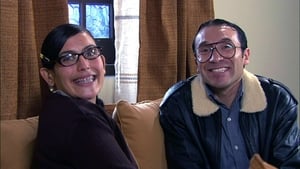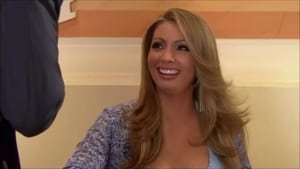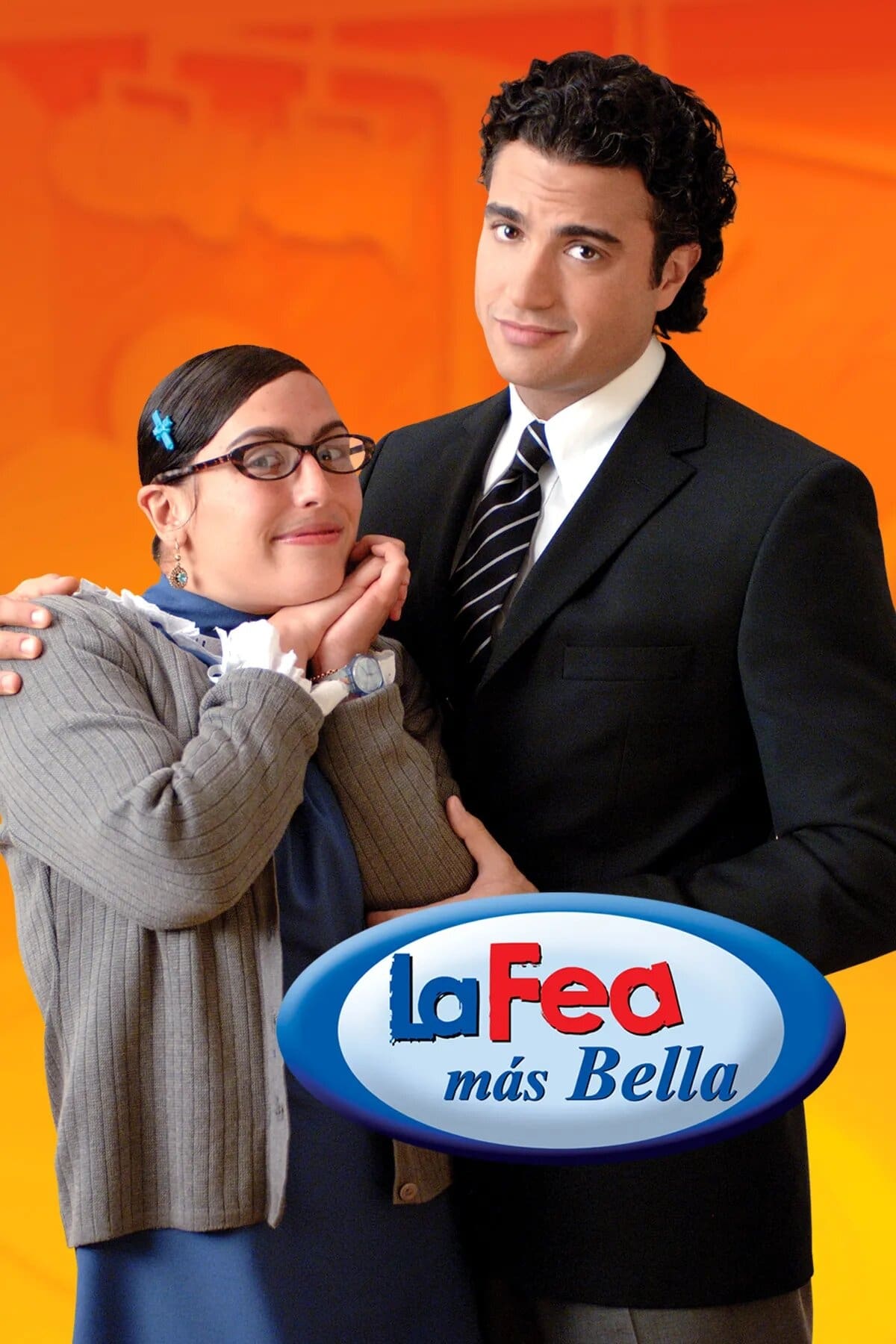La fea más bella (2006) – Season 1
La fea más bella
Backdrop for La fea más bella.
Used for reference and discovery. All rights belong to their respective owners.
All episodes from La fea más bella (2006) Season 1
|
|
La fea más bella (2006) Season 1
Season 1 of La fea más bella premiered in 2006 and marks an important evolution for the series as a whole. This new chapter expands the story world while deepening the emotional resonance that has always defined the show. From the opening scenes, it becomes clear that the narrative has grown more reflective, embracing mature themes and layered storytelling. The season builds upon the foundations of previous installments but takes greater creative risks—experimenting with pacing, tone, and structure to deliver a more sophisticated experience. Viewers are invited to follow characters who are no longer just reacting to their world but actively shaping it, sometimes at great personal cost. The writing team crafts each episode with a strong sense of purpose, blending drama and tension with quieter, introspective moments that allow the story to breathe. The result is a season that feels cohesive yet unpredictable, familiar yet filled with new emotional depth.
Visually, La fea más bella has never looked better. The production team approaches Season 1 with the confidence of a series that understands its own identity while still pushing boundaries. Every frame feels intentional: the lighting shifts from warmth to shadow to mirror internal conflict, and the camera often lingers on gestures or expressions that reveal more than words ever could. The color palette is rich yet grounded, reflecting the evolving tone of the story—from moments of hope to scenes of quiet despair. The costume and set design remain meticulously detailed, each environment telling a subtle part of the story. The music plays a key role as well, weaving emotional cues that guide viewers through tension, loss, and revelation. Even in its more restrained episodes, the season maintains a cinematic quality that rewards careful attention. This isn’t spectacle for spectacle’s sake—it’s a visual language that reinforces the emotional weight of each scene.
One of the strongest aspects of Season 1 is its focus on character evolution. The series refuses to let its characters remain static; instead, it challenges them to confront new dilemmas that test their beliefs and relationships. Long-time viewers will notice that familiar faces return under different circumstances, shaped by the consequences of their past choices. Meanwhile, new characters are introduced with purpose, expanding the story’s scope without diluting its focus. Each major character undergoes a journey that feels personal and believable—struggling with guilt, ambition, loyalty, and the search for identity. Some face external conflicts that mirror their internal battles, while others quietly unravel under the weight of memory and regret. The emotional honesty of the performances gives the season its power. Every exchange, whether whispered in a dimly lit room or shouted in desperation, carries meaning. It’s in these human moments—subtle, flawed, and deeply felt—that the show continues to earn its reputation as one of the most emotionally intelligent series of its kind.
As the episodes progress, threads from earlier seasons begin to intertwine in ways that feel both surprising and inevitable. The pacing is deliberate but never sluggish, allowing storylines to breathe and intersect naturally. Small details that once seemed incidental take on new significance, revealing just how carefully the season has been constructed. There are moments of revelation that leave audiences stunned, not because they are shocking for their own sake, but because they arise naturally from the logic of the narrative. Themes of forgiveness, accountability, and the cyclical nature of conflict are explored through parallel storylines, each offering a different perspective on what it means to change—or to refuse change. The writing shows restraint, trusting viewers to connect the dots rather than spelling out every emotion or motivation. The final stretch of episodes builds to a powerful crescendo, culminating in a finale that is both satisfying and open-ended. It honors what came before while laying the groundwork for future possibilities.
In its entirety, Season 1 of La fea más bella stands as a confident, emotionally resonant continuation of the series’ legacy. It refines everything that fans love about the show—its attention to character, its moral complexity, its ability to blend realism with symbolism—while introducing new storytelling techniques that keep it fresh. The pacing, performances, and atmosphere come together to form a season that feels thematically rich and visually distinct. Whether you’re revisiting the series or experiencing it for the first time, this chapter offers something rare: a story that entertains while encouraging reflection. The writers understand that lasting impact comes not just from big moments, but from the quiet truths that linger after the credits roll. Season 1 invites audiences to think, to feel, and to question—and in doing so, it cements La fea más bella as one of the most thoughtful and compelling shows of its era.
| Title | La fea más bella | |
|---|---|---|
| Genre | Soap, Comedy, Drama | |
| Air Date | 2006-01-23 | |
| Season | 1 | |
| Total Episodes | 300 | |
| Overview | La Fea Más Bella is a Mexican telenovela produced by Televisa. It is the second Mexican version of the popular Colombian telenovela: Betty la fea. La Fea más Bella stars popular actress/singer/comedian Angélica Vale and actor/singer Jaime Camil, with one of the most diverse and popular supporting casts ever assembled in Mexico, including Angélica María, José José, Sergio Mayer, Elizabeth Álvarez, Patricia Navidad and many others. Univision broadcast 2 hour episodes of La Fea Más Bella from September 13, 2010 to April 15, 2011 La Fea Más Bella also won the TV y Novelas award for best telenovela of the year. In 2009 it was dubbed into Arabic and aired on MTV Lebanon as Letty instead of La Fea Más Bella. "The Best Telenovela of the Year 2007". |
|
| Stars |
|
|
La fea más bella - Season 1

Episode 1: Episode 1
January 23, 2006

Episode 2: Episode 2
January 24, 2006

Episode 3: Episode 3
January 25, 2006

Episode 4: Episode 4
January 26, 2006

Episode 5: Episode 5
January 27, 2006

Episode 6: Episode 6
January 30, 2006

Episode 7: Episode 7
January 31, 2006

Episode 8: Episode 8
February 1, 2006

Episode 9: Episode 9
February 2, 2006

Episode 10: Episode 10
February 3, 2006

Episode 11: Episode 11
February 6, 2006

Episode 12: Episode 12
February 7, 2006

Episode 13: Episode 13
February 7, 2006

Episode 14: Episode 14
February 8, 2006

Episode 15: Episode 15
February 9, 2006

Episode 16: Episode 16
February 10, 2006

Episode 17: Episode 17
February 13, 2006

Episode 18: Episode 18
February 14, 2006

Episode 19: Episode 19
February 15, 2006

Episode 20: Episode 20
February 16, 2006

Episode 21: Episode 21
February 17, 2006

Episode 22: Episode 22
February 20, 2006

Episode 23: Episode 23
February 21, 2006

Episode 24: Episode 24
February 22, 2006

Episode 25: Episode 25
February 23, 2006

Episode 26: Episode 26
February 24, 2006

Episode 27: Episode 27
February 27, 2006

Episode 28: Episode 28
February 28, 2006

Episode 29: Episode 29
March 1, 2006

Episode 30: Episode 30
March 2, 2006

Episode 31: Episode 31
March 3, 2006

Episode 32: Episode 32
March 6, 2006

Episode 33: Episode 33
March 7, 2006

Episode 34: Episode 34
March 8, 2006

Episode 35: Episode 35
March 9, 2006

Episode 36: Episode 36
July 12, 2006

Episode 37: Episode 37
July 17, 2006

Episode 38: Episode 38
July 18, 2006

Episode 39: Episode 39
July 19, 2006

Episode 40: Episode 40
July 24, 2006

Episode 41: Episode 41
July 25, 2006

Episode 42: Episode 42
July 26, 2006

Episode 43: Episode 43
July 31, 2006

Episode 44: Episode 44
August 1, 2006

Episode 45: Episode 45
August 2, 2006

Episode 46: Episode 46
August 7, 2006

Episode 47: Episode 47
August 8, 2006

Episode 48: Episode 48
August 9, 2006

Episode 49: Episode 49
August 14, 2006

Episode 50: Episode 50
August 15, 2006

Episode 51: Episode 51
August 16, 2006

Episode 52: Episode 52
August 21, 2006

Episode 53: Episode 53
August 22, 2006

Episode 54: Episode 54
August 23, 2006

Episode 55: Episode 55
August 28, 2006

Episode 56: Episode 56
August 29, 2006

Episode 57: Episode 57
August 30, 2006

Episode 58: Episode 58
September 4, 2006

Episode 59: Episode 59
September 5, 2006

Episode 60: Episode 60
September 6, 2006

Episode 61: Episode 61
September 11, 2006

Episode 62: Episode 62
September 12, 2006

Episode 63: Episode 63
September 13, 2006

Episode 64: Episode 64
September 18, 2006

Episode 65: Episode 65
September 19, 2006

Episode 66: Episode 66
September 20, 2006

Episode 67: Episode 67
September 25, 2006

Episode 68: Episode 68
September 26, 2006

Episode 69: Episode 69
September 27, 2006

Episode 70: Episode 70
October 2, 2006

Episode 71: Episode 71
October 3, 2006

Episode 72: Episode 72
October 4, 2006

Episode 73: Episode 73
October 9, 2006

Episode 74: Episode 74
October 10, 2006

Episode 75: Episode 75
October 11, 2006

Episode 76: Episode 76
October 16, 2006

Episode 77: Episode 77
October 17, 2006

Episode 78: Episode 78
October 18, 2006

Episode 79: Episode 79
October 23, 2006

Episode 80: Episode 80
October 24, 2006

Episode 81: Episode 81
October 25, 2006

Episode 82: Episode 82
October 30, 2006

Episode 83: Episode 83
October 31, 2006

Episode 84: Episode 84
November 1, 2006

Episode 85: Episode 85
November 6, 2006

Episode 86: Episode 86
Unknown date

Episode 87: Episode 87
Unknown date

Episode 88: Episode 88
Unknown date

Episode 89: Episode 89
Unknown date

Episode 90: Episode 90
Unknown date

Episode 91: Episode 91
Unknown date

Episode 92: Episode 92
Unknown date

Episode 93: Episode 93
Unknown date

Episode 94: Episode 94
Unknown date

Episode 95: Episode 95
Unknown date

Episode 96: Episode 96
Unknown date

Episode 97: Episode 97
Unknown date

Episode 98: Episode 98
Unknown date

Episode 99: Episode 99
Unknown date

Episode 100: Episode 100
Unknown date

Episode 101: Episode 101
Unknown date

Episode 102: Episode 102
Unknown date

Episode 103: Episode 103
Unknown date

Episode 104: Episode 104
Unknown date

Episode 105: Episode 105
Unknown date

Episode 106: Episode 106
Unknown date

Episode 107: Episode 107
Unknown date

Episode 108: Episode 108
Unknown date

Episode 109: Episode 109
Unknown date

Episode 110: Episode 110
Unknown date

Episode 111: Episode 111
Unknown date

Episode 112: Episode 112
Unknown date

Episode 113: Episode 113
Unknown date

Episode 114: Episode 114
Unknown date

Episode 115: Episode 115
Unknown date

Episode 116: Episode 116
Unknown date

Episode 117: Episode 117
Unknown date

Episode 118: Episode 118
Unknown date

Episode 119: Episode 119
Unknown date

Episode 120: Episode 120
Unknown date

Episode 121: Episode 121
Unknown date

Episode 122: Episode 122
Unknown date

Episode 123: Episode 123
Unknown date

Episode 124: Episode 124
Unknown date

Episode 125: Episode 125
Unknown date

Episode 126: Episode 126
Unknown date

Episode 127: Episode 127
Unknown date

Episode 128: Episode 128
Unknown date

Episode 129: Episode 129
Unknown date

Episode 130: Episode 130
Unknown date

Episode 131: Episode 131
Unknown date

Episode 132: Episode 132
Unknown date

Episode 133: Episode 133
Unknown date

Episode 134: Episode 134
Unknown date

Episode 135: Episode 135
Unknown date

Episode 136: Episode 136
Unknown date

Episode 137: Episode 137
Unknown date

Episode 138: Episode 138
Unknown date

Episode 139: Episode 139
Unknown date

Episode 140: Episode 140
Unknown date

Episode 141: Episode 141
Unknown date

Episode 142: Episode 142
Unknown date

Episode 143: Episode 143
Unknown date

Episode 144: Episode 144
Unknown date

Episode 145: Episode 145
Unknown date

Episode 146: Episode 146
Unknown date

Episode 147: Episode 147
Unknown date

Episode 148: Episode 148
Unknown date

Episode 149: Episode 149
Unknown date

Episode 150: Episode 150
Unknown date

Episode 151: Episode 151
Unknown date

Episode 152: Episode 152
Unknown date

Episode 153: Episode 153
Unknown date

Episode 154: Episode 154
Unknown date

Episode 155: Episode 155
Unknown date

Episode 156: Episode 156
Unknown date

Episode 157: Episode 157
Unknown date

Episode 158: Episode 158
Unknown date

Episode 159: Episode 159
Unknown date

Episode 160: Episode 160
Unknown date

Episode 161: Episode 161
Unknown date

Episode 162: Episode 162
Unknown date

Episode 163: Episode 163
Unknown date

Episode 164: Episode 164
Unknown date

Episode 165: Episode 165
Unknown date

Episode 166: Episode 166
Unknown date

Episode 167: Episode 167
Unknown date

Episode 168: Episode 168
Unknown date

Episode 169: Episode 169
Unknown date

Episode 170: Episode 170
Unknown date

Episode 171: Episode 171
Unknown date

Episode 172: Episode 172
Unknown date

Episode 173: Episode 173
Unknown date

Episode 174: Episode 174
Unknown date

Episode 175: Episode 175
Unknown date

Episode 176: Episode 176
Unknown date

Episode 177: Episode 177
Unknown date

Episode 178: Episode 178
Unknown date

Episode 179: Episode 179
Unknown date

Episode 180: Episode 180
Unknown date

Episode 181: Episode 181
Unknown date

Episode 182: Episode 182
Unknown date

Episode 183: Episode 183
Unknown date

Episode 184: Episode 184
Unknown date

Episode 185: Episode 185
Unknown date

Episode 186: Episode 186
Unknown date

Episode 187: Episode 187
Unknown date

Episode 188: Episode 188
Unknown date

Episode 189: Episode 189
Unknown date

Episode 190: Episode 190
Unknown date

Episode 191: Episode 191
Unknown date

Episode 192: Episode 192
Unknown date

Episode 193: Episode 193
Unknown date

Episode 194: Episode 194
Unknown date

Episode 195: Episode 195
Unknown date

Episode 196: Episode 196
Unknown date

Episode 197: Episode 197
Unknown date

Episode 198: Episode 198
Unknown date

Episode 199: Episode 199
Unknown date

Episode 200: Episode 200
Unknown date

Episode 201: Episode 201
Unknown date

Episode 202: Episode 202
Unknown date

Episode 203: Episode 203
Unknown date

Episode 204: Episode 204
Unknown date

Episode 205: Episode 205
Unknown date

Episode 206: Episode 206
Unknown date

Episode 207: Episode 207
Unknown date

Episode 208: Episode 208
Unknown date

Episode 209: Episode 209
Unknown date

Episode 210: Episode 210
Unknown date

Episode 211: Episode 211
Unknown date

Episode 212: Episode 212
Unknown date

Episode 213: Episode 213
Unknown date

Episode 214: Episode 214
Unknown date

Episode 215: Episode 215
Unknown date

Episode 216: Episode 216
Unknown date

Episode 217: Episode 217
Unknown date

Episode 218: Episode 218
Unknown date

Episode 219: Episode 219
Unknown date

Episode 220: Episode 220
Unknown date

Episode 221: Episode 221
Unknown date

Episode 222: Episode 222
Unknown date

Episode 223: Episode 223
Unknown date

Episode 224: Episode 224
Unknown date

Episode 225: Episode 225
Unknown date

Episode 226: Episode 226
Unknown date

Episode 227: Episode 227
Unknown date

Episode 228: Episode 228
Unknown date

Episode 229: Episode 229
Unknown date

Episode 230: Episode 230
Unknown date

Episode 231: Episode 231
Unknown date

Episode 232: Episode 232
Unknown date

Episode 233: Episode 233
Unknown date

Episode 234: Episode 234
Unknown date

Episode 235: Episode 235
Unknown date

Episode 236: Episode 236
Unknown date

Episode 237: Episode 237
Unknown date

Episode 238: Episode 238
Unknown date

Episode 239: Episode 239
Unknown date

Episode 240: Episode 240
Unknown date

Episode 241: Episode 241
Unknown date

Episode 242: Episode 242
Unknown date

Episode 243: Episode 243
Unknown date

Episode 244: Episode 244
Unknown date

Episode 245: Episode 245
Unknown date

Episode 246: Episode 246
Unknown date

Episode 247: Episode 247
Unknown date

Episode 248: Episode 248
Unknown date

Episode 249: Episode 249
Unknown date

Episode 250: Episode 250
Unknown date

Episode 251: Episode 251
Unknown date

Episode 252: Episode 252
Unknown date

Episode 253: Episode 253
Unknown date

Episode 254: Episode 254
Unknown date

Episode 255: Episode 255
Unknown date

Episode 256: Episode 256
Unknown date

Episode 257: Episode 257
Unknown date

Episode 258: Episode 258
Unknown date

Episode 259: Episode 259
Unknown date

Episode 260: Episode 260
Unknown date

Episode 261: Episode 261
Unknown date

Episode 262: Episode 262
Unknown date

Episode 263: Episode 263
Unknown date

Episode 264: Episode 264
Unknown date

Episode 265: Episode 265
Unknown date

Episode 266: Episode 266
Unknown date

Episode 267: Episode 267
Unknown date

Episode 268: Episode 268
Unknown date

Episode 269: Episode 269
Unknown date

Episode 270: Episode 270
Unknown date

Episode 271: Episode 271
Unknown date

Episode 272: Episode 272
Unknown date

Episode 273: Episode 273
Unknown date

Episode 274: Episode 274
Unknown date

Episode 275: Episode 275
Unknown date

Episode 276: Episode 276
Unknown date

Episode 277: Episode 277
Unknown date

Episode 278: Episode 278
Unknown date

Episode 279: Episode 279
Unknown date

Episode 280: Episode 280
Unknown date

Episode 281: Episode 281
Unknown date

Episode 282: Episode 282
Unknown date

Episode 283: Episode 283
Unknown date

Episode 284: Episode 284
Unknown date

Episode 285: Episode 285
Unknown date

Episode 286: Episode 286
Unknown date

Episode 287: Episode 287
Unknown date

Episode 288: Episode 288
Unknown date

Episode 289: Episode 289
Unknown date

Episode 290: Episode 290
Unknown date

Episode 291: Episode 291
Unknown date

Episode 292: Episode 292
Unknown date

Episode 293: Episode 293
Unknown date

Episode 294: Episode 294
Unknown date

Episode 295: Episode 295
Unknown date

Episode 296: Episode 296
Unknown date

Episode 297: Episode 297
Unknown date

Episode 298: Episode 298
Unknown date

Episode 299: Episode 299
Unknown date

Episode 300: Episode 300
Unknown date








